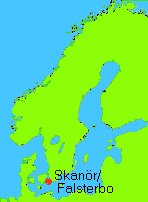Meet the Middle Ages
BackSkanör/Falsterbo

Skanör and Falsterbo were large towns during the Middle Ages. They were at the centre of the herring fishery in the southern Baltic Sea. The fishing was controlled by the Danish King, who made a lot of money from it. Fish, especially herring, was important food to medieval people. It was the only kind of food allowed during the fast.
During the 14th and 15th centuries, the supply of herring decreased rapidly in the Baltic, but the commercial centres lived on. During the great period of herring fishery, Skanör was the most important of the two towns. In mid-14th century, this role was taken over by Falsterbo. The fairs in Skanör and Falsterbo continued until the end of the 16th century.
Both towns had castles. There are still some ruins of the Skanör castle, but Falsterbohus has vanished. Queen Margareta’s oldest son Olaf died at Falsterbohus in 1387.